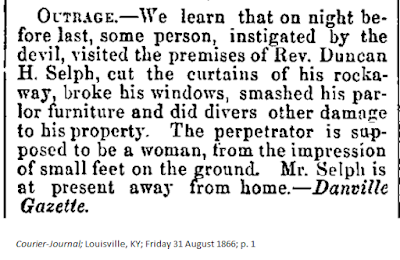© Kathy Duncan, 2021
The first step in looking for any difficult-to-find record should be the Family Search Research Wiki. That's how I located the Revolutionary War Claim for Daniel McLean. I had seen a reference to it in a google book; Copy of the Original Index Book Showing the Revolutionary War Claims Filed in South Carolina between August 20, 1873 and August 31, 1786, Kept by James McCall Auditor General and copied by Jean Revill. However, I could not figure out how to locate the record.
Enter the Family Search Research Wiki. The record I was searching for was referenced on the "South Carolina Military Records" entry in the Research Wiki. The best part about the Research Wiki pages is that they contain links to the various records. Sometimes they lead to a Family Search record group, sometimes Ancestry, and sometimes something else.
Turns out Jean Revill's book was also listed on the Wiki. Further down the page was a subheading called "South Carolina Revolutionary Claims, 1783 to 1786" with a link to the twelve volumes of stub entries:
Stub Entries to Indents Issued in Payments of Claims Against South Carolina Growing Out of the Revolution, Book X, pt 1, page 11:
The footnote reads as follows: "Interlined below is: Mc : Clain."
That would seem to indicate that the original document contains two spellings of Daniel McClean/McClain/McClane's name.
In 1781, my ancestor Daniel McLean was about 56 years old. At that age, I would not expect him to serve as a soldier. However, a fifty-six-year-old man would probably be able to drive cattle for the Revolutionary army. This claim indicates that Daniel McClane spent 66 days driving cattle in 1781 & 1782. It's interesting to note that he was being paid for service and not being reimbursed for the actual cattle. That suggests to me that he did not own the cattle, but was, in fact, rendering a service. This Daniel McLane was still living in 1785 when he received payment, and I know that my Daniel McLean was still living in 1787.
However, no Daniel McLean has been found on the 1790 census. Since I have not located any living Daniel McLeans (or any other spellings of the name) in the state in 1790, I am guessing that there was only one man of that name when Daniel McClane was paid for his claim. By 1790, he would have been 65 years old if he was still living. He was either living in another household so that he was not named on the census or he was deceased.
What is exciting about this reference to Daniel McClane's service is that the Ulster Scots in the backcountry of South Carolina had to be "wooed" over to the American side of the Revolutionary War conflict. That is understandable when you consider what they had to lose. Daniel McLean had received his bounty land in 1768, and it was bestowed by the crown. Seven short years later, the rebels were sending emissaries out through the countryside to "convince" the backcountry men to their side. Throwing his lot in with the patriots would mean jeopardizing everything that Daniel had acquired and built since coming to the colonies in 1768 - all of which he could not accomplish in Ireland. He might have felt obligated to remain loyal to the crown while at the same time probably having no great love for the English. Of course, at this point Daniel McLean's son-in-law Archibald Owings was serving on the American side.





